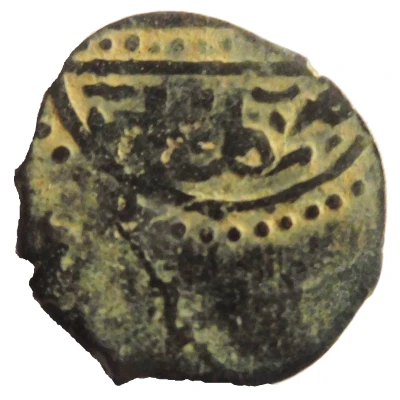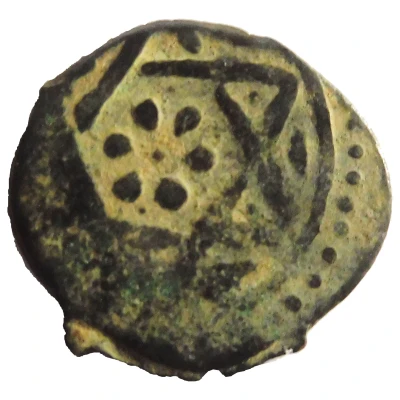


© Cycnos (CC BY-NC)
Fals - al-Nāṣir Muhammad I Trablus ND
| Copper | 2.38 g | 16 mm |
| Issuer | Mamluk Sultanate |
|---|---|
| Sultan | Muhammad I (1293-1294, 1299-1309, 1310-1341) |
| Type | Standard circulation coin |
| Years | 1310-1341 |
| Value | 1 Fals (1⁄60) |
| Currency | Dinar (1250-1517) |
| Composition | Copper |
| Weight | 2.38 g |
| Diameter | 16 mm |
| Shape | Round (irregular) |
| Technique | Hammered |
| Demonetized | Yes |
| Updated | 2024-10-05 |
| Numista | N#151379 |
|---|---|
| Rarity index | 97% |
Reverse
Inside a circle, an eagle deployed, head turned to the left.
Script: Arabic
Comment
Son of of the Baharite dynasty, An-Nasir Muhammad ben Qala'un succeeded his brother in 1293, at the age of 9.He was briefly dethroned by his tutor in 1298 and had to renounce the throne again in 1309 in favor of .
Close to the people, but cruel to the rich, he was responsible for the execution of many emirs; on the military level, he won many victories, thus stabilizing his power until his death in 1341.
His succession, on the other hand, led to a period of turmoil during which many of his sons succeeded each other; the first, , reigned for only a few months.
Interesting fact
One interesting fact about this coin is that it was issued during the reign of al-Nāṣir Muhammad I, who was the seventh Sultan of the Mamluk Sultanate, and was known for his military campaigns and administrative reforms. The coin's design features the name of the Sultan and the date of issue in Arabic, as well as a stylized image of a horseman on the reverse side. Despite being made of copper, the coin was still considered a valuable form of currency during its time, and its design and minting process reflect the advanced craftsmanship and engineering skills of the Mamluk Empire.



